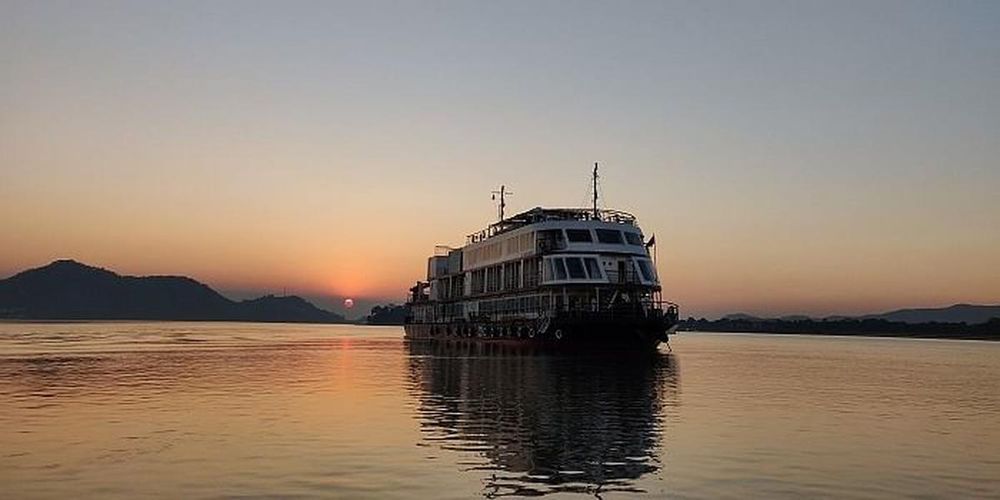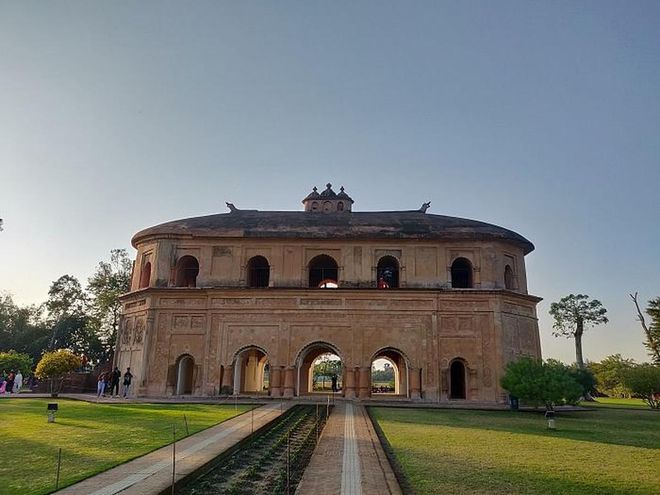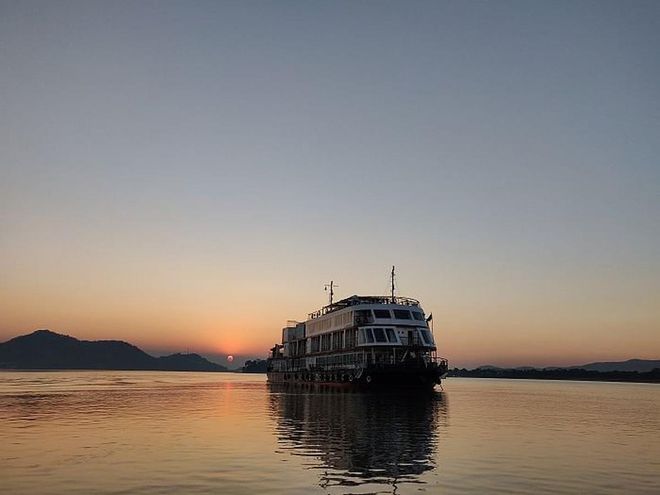The Escape: Cruising Along Assam's Idyllic Brahmaputra River
Welcome to adventure cruising in remote India, a journey that assails your senses with fresh conundrums every day


Elephant safari at Karizanga National Park. Photo: Mayresh Hendre
Elephant safari at Karizanga National Park
There are many dilemmas facing today’s traveller: Is my carbon footprint light enough? Are local people benefitting from my visit? Am I respecting the culture? So perhaps it wasn’t so surprising, as we drive towards Kaziranga National Park, in Assam India, at 5am, that someone asks: “How will I know if my elephant is well cared for?” We’d travelled hundreds of kilometres and endured a 90-minute white-knuckled road trip to get this far before sunrise for an elephant safari through the plains. For modern day globetrotters, eco- and socialconsciousness plays a big part in their holiday choices. Google “should I ride an elephant” and you’ll find hundreds of posts arguing the toss. We quiz our mahout relentlessly and were encouraged by the fact that, in this World Heritage Site, our female elephant only works two hours a day before the sun gets too hot.
Welcome to adventure cruising in remote India, a journey that assails your senses with fresh conundrums every day. We’re sailing up the mighty Brahmaputra River like true explorers. Some 200m ahead, a wooden boat acts as our pilot. A man on the bow dips a long pole into the murky waters to ensure there is enough depth for the MV Mahabaahu to proceed. The MV Mahabaahu is one of only two ships that make the trek from Guwahati in Assam to Kaziranga National Park, a 430sqkm UNESCO World Heritage Site. There’s a spa deck for Ayurvedic treatments and a small pool at the back of the ship. Best of all is the large sun deck on the top floor where you can while away your afternoons peering through binoculars at the ever-changing banks, looking for wildlife, or waving at the incredibly excited villagers. There is a single dining room and all meals are provided. Dinner is a five-course affair, and our cruise director mixes guests cunningly so everyone quickly finds like-minded companions to chat with over their meals.

The stunning 18th century Rang Ghar - a free-standing pavilion built for kings to watch sports. Photo: Mayresh Hendre
The stunning 18th century Rang Ghar
The passengers have travelled all across the globe for this river experience. Landing in Kolkata, New Delhi and Mumbai respectively, everyone’s about as far from India’s hustle and bustle as they can get. Starting the cruise from Guwaharti, a narrow strip of land in the northwestern state of Assam, known as “The Chicken’s Neck”, the area is also “politically sensitive” and patrolled by the Bengal Rifles Brigade. It’s home to one of India’s best kept secrets—an astonishing array of wildlife such as deer, hogs, leopard cats, otters, wild boar and jackals. It’s a birding paradise with eagles, buzzards and kites. It’s also the last refuge of the one-horned rhino, a beast so hunted by poachers eager to please mainland China’s appetite for its horn that they risk being shot on sight.
The Mahabaahu is every inch an Indian river ship. If you like cultural immersion from a visit to a local home to a performance by a dance troupe, this is for you. Every meal is local Indian cuisine, accompanied with Indian wines and the obligatory masala chai tea. Afternoons are spent on excursions to charming villages where children greet us with “Hello” and then shyly shake hands. Other days include visits to jute mills, fishing villages and traditional Indian dancing in tea plantations. One magical evening included drinks and a bonfire on a sandbank. The evening ends with lighted candles on banana leaves which we are invited to place in the river with a wish and watch them gently make their way along the sea of black glass. But all of this is but a prelude to the main game. We’ve come here for safari, and after four days of these excursions, we’re ready for the grand finale.

The MV Mahabaahu gently cruising up the Brahmaputra River. Photo: Mayresh Hendre
Everyone is here to catch a glimpse of the mighty Bengal Tiger. Thus, there were no complaints when the wake-up time was set at an ungodly 3.30am. Chilly at 10 degrees, we ply ourselves with hot tea, a couple of pratas and winter woolies. Mayresh Hendre, a 21-year-old former Mumbai advertising executive who gave it all up to focus on wildlife photography, is our official guide. He assures us the elephant safari is approved and that the elephants are well cared for. “Sometimes, if you drop something like your camera, the elephant will pick it up and return it to you,” he maintains.
Beyond the mist, swaying grey figures emerge through the clearing. The magnificent beasts wear saddles as you mount them from a specially-constructed tower. Usually, couples ride together with a mahout and a guard, who wields an enormous shotgun loaded with blank cartridges. Our elephant brings along her three calves. And as we gently stroll through the long grass, she stops occasionally to pull some choice stems to feed her brood. Our mahout has been riding elephants since he was 12, and it is hard not to feel that there is a bond between these mighty beasts and humans.

Dancing students performing in a tea plantation. Photo: Mayresh Hendre
Dancing students performing in a tea plantation
Suddenly, there is our first sighting. A single-horned rhino is having an early morning snack in the grass. The 2,100kg rhinoceros unicorn is a solitary animal. Hunted almost to extinction, they have been saved thanks to the Indian government and UNESCO financed parks like Kaziranga. On our hour-long safari, we see many rhinos, along with deer, buffalo and birds. Though our mahout speaks little English, his excited finger pointing was enough to have us scurrying to our guide books to identify the next animal. And the tigers? Well, with a dozen mighty elephants and two dozen tourists ploughing through the park, perhaps they could be forgiven for remaining an enigma.
Our seven nights aboard the Mahabaahu turned out to be an extraordinary learning experience. The Brahmaputra is a fascinating river. You’ll feel like a true explorer, as there are still only a few international travellers who have ventured this far. It’s a truly immersive Indian experience that shows you a different side of this magnificent country beyond the wonders of the Taj Mahal or the grand palaces in Jaipur. It shows the marvels of Mother Nature as she intended from the fertile sand banks of the river to the grand elephants in the mist. Enjoy the ride—nature’s beauty won’t last a lifetime.
For more information visit www.cruisetraveller.com.au.
Related articles:
Top 20 World’s Best Adults-Only Resorts
Five Reasons Why Finland Should Be At The Top Of Your Travel List
The 10 Most Booked Wellness Experiences In The World, According To Tripadvisor